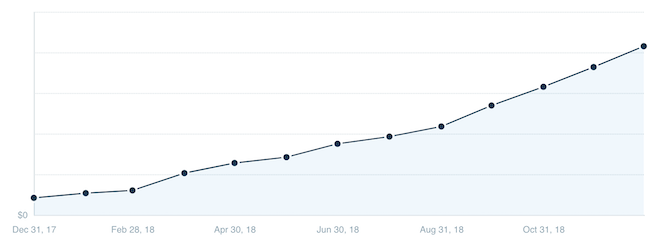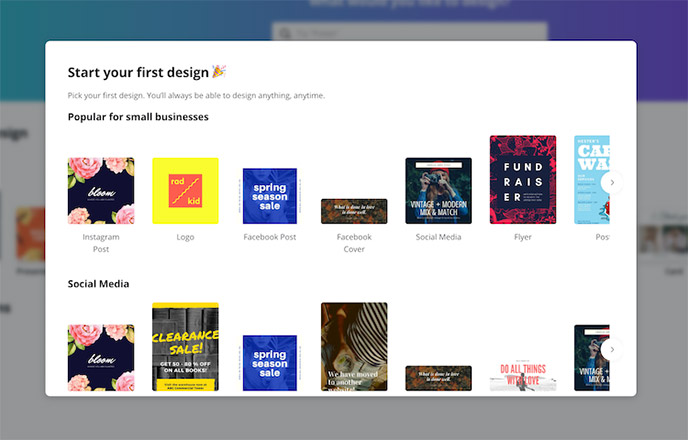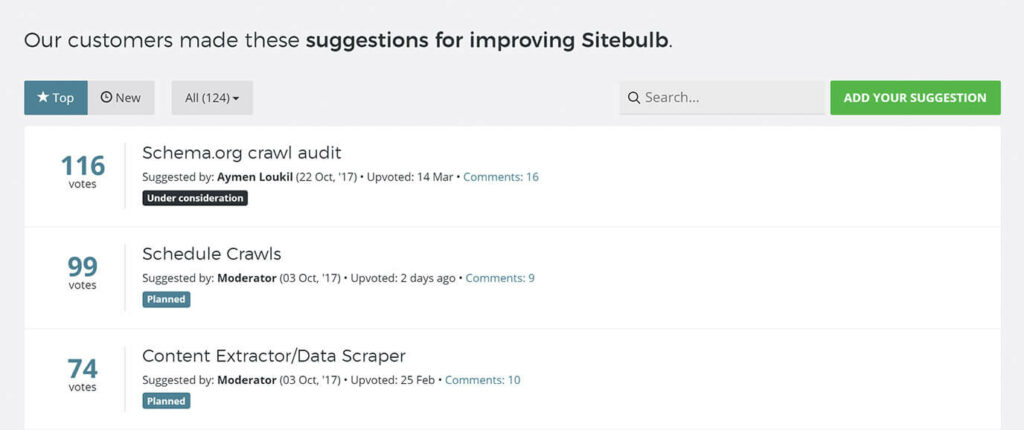How often do you deploy updates to your SaaS product? Weekly? Daily? Several times a day?
We’ll hold up our hands to several times a day. That’s the modern way of working. It’s so quick and easy. An improvement here, a tweak there, a shiny feature in the pipeline, launching tomorrow.
It’s great. We can be super responsive to feedback from our team, from our customers and from trial users. We can pivot when we realise we’re heading in the wrong direction. We can accelerate into exciting growth channels as we glimpse their potential.
However, is the ease with which we can launch new features actually leading us astray?
Making us say ‘Oh I’ll just add that feature. It won’t take long’ when really we should be saying: ‘We don’t need that. What we need is this instead.’
Your customers want you to fix bugs rather than add new features
Up first in our list of ‘what you should do before you add another new feature’ is bug fixes. These are unglamorous. They make your engineering team a bit glum. They have never yet featured in a blue sky thinking exercise organised by management.
However, your customers want you to fix bugs.
An inevitable side-effect of frequently adding new features to your SaaS product is that quality suffers. The more features you add, the more bugs could creep into your product.
Your customers would have a much happier experience using your product if you made existing features as bug-free as possible. After all, using a product only for it to inexplicably refuse to do something it should is very annoying for customers. It can cause them to stop using your product altogether, particularly if it happens once too often.
By concentrating on fixing bugs, you keep your existing customers happy, which helps to steady your churn rate and increase word of mouth recommendations.
Of course, not all bugs need to be fixed urgently. You should prioritise as you would feature requests. But generally, an unbuggy product is a popular product.
Fixing bugs might also save you maintenance costs down the line. In this Stack Overflow exchange a contributor explains the benefit of bug fixing versus adding a new feature:
From a technical perspective, bugs may be more critical, because they indicate an error in a foundation which other code might use/build on, in which case the error is “contagious” and adds cost to future maintenance. So not fixing a bug is a technical debt which require management, while not implementing a feature does not really have an ongoing cost. But the level of technical debt incurred by a bug very much depends on the nature of the bug.
For more help with how to prioritise bug fixes read this article on Mind the Product.
For more reasons why you should fix bugs before writing new code read our own blog post: Bug vs feature: What’s the difference and which to prioritise?

You’ll get a higher ROI from marketing rather than by adding unnecessary new features
In ‘Success is always one feature away,’ Andy Brice observed that adding new features can be an excuse to avoid the real problem with a product: a lack of marketing. Brice writes that: “In my experience, poor sales are almost always due to insufficient marketing.”
Brice is writing specifically about small companies. However, the desire to spend money on extra features rather than on marketing and onboarding isn’t confined to this niche. Plenty of companies struggle with this attitude, whether they have an engineering founder or management obsessed with keeping up with bigger competitors.
However, the reasons why you should concentrate on marketing instead are manifold. People won’t buy your product if they don’t know about it, or understand how it will solve a problem that’s really annoying them.
- 47% of buyers viewed 3-5 pieces of content before engaging with a sales rep (DemandGenReport)
- 68% of people spend time reading about brands that interest them; 80% of people appreciate learning about a company through custom content (DemandMetric)
- Leads that come through content marketing will increase the average sale price by 20% (ContentMarketingInstitute)
Here at Feature Upvote, we were a little guilty of thinking we could develop our way to a bigger customer base. Mainly because that was what we were good at.
However, we soon realised three things:
- Customers generally liked our product, particularly its simplicity
- New customers from outside our target group were using Feature Upvote in ways we didn’t anticipate, which was something we should explore
- Our other KPIs were decent so customer acquisition was the priority
As a result, we started investing more in marketing, starting last year. This is our MMR growth for 2018: early days, from a low base, but not bad.

Improving your onboarding is a fantastic (and underestimated) way to increase revenue
User Onboarding is the process of increasing the likelihood that new users become successful when adopting your product.UserOnboard
You have a small window to persuade people trying out your SaaS product that it is a must-have rather than a ‘Hum, looks okay, but I’ll come back to it later… maybe’.

Your onboarding needs to swiftly help people find value in your product so they pay for it (if they are on a free trial) or keep paying for it if they’ve already given you money.
After all, if you’ve invested time and money in persuading people to try your software you should do everything in your power to make sure they convert.
Have you ever wondered just how many of your users have actually used your product since signing up, even just once? It turns out that for most products, the answer is: not many.Will Egam, CMO, Ausmed
In this case study by Ausmed, the CMO Will Egam shows how five strategies helped them significantly improve their customer onboarding experience and increase their activation rate from 15% to 75% over two years.
That’s a massive improvement, which must have translated into a nice revenue boost.
Removing features could actually boost sales
This probably seems like an Alice through the Looking Glass kind of option. I mean: removing features? Are you crazy?
Well, this is a drastic option, but if your product has become bloated then all those features have become a liability. Your product is too hard to use. Old customers might be hanging on in there, but new customers are taking one look at all that complexity and thinking ‘no thanks’.
Easier to use competitors are getting more traction. You need to slim down or risk losing ground. Yes, you’ll possibly anger a few customers who requested that millionth new feature you didn’t really need, but overall a feature diet should help your company grow – in the right direction.
Silicon Valley is littered with examples of products that were too complicated. Juicero raised $120 million from investors before being widely ridiculed as an over-engineered, over-hyped and over-priced ‘solution’ to using a simple juicer.

But how do you know if your product has feature bloat? If you’re in touch with your customer base a few red lights have already flicked on. Your churn rate is going up. New customers are five times more likely to contact support in their first 30 days. Someone at your company has actually tried to use your product and got stuck.
To corroborate this unsettling information, you should analyse adoption per feature. See which of your paying customers are using which features. Are there any features used by less than 8% of your customers? If so, you’re in ‘kill your darlings’ territory. For more help with deciding whether your product has feature creep read this article by Intercom.
Creating a process for prioritising features will help you build better products
Instead of adding a new feature, put in place a process for making sure you only add features that will be a hit with customers.
You’ve probably got some kind of process in place already. But it might be hijacked by what Jenny Wanger calls “squeaky wheel syndrome”:
This can be a person or a topic, but it’s always something where I feel like an all-caps message came through: “THIS IS A BIG DEAL!! FIX IT!”
However, if you have a proper system in place then you can rebuff such requests without making it personal. The system says ‘no’ rather than ‘I say no’.
There are many prioritisation systems you can choose, most with terrible acronyms, but what really matters is that you have cross-team agreement. That way you’re less likely to have people swooping in with less than helpful suggestions to be implemented asap.
We’re big fans of using a product ideas board to collect and upvote team feedback, with a private board, and customer feedback, with a public board. Indeed, we’re such big fans, that we built Feature Upvote to do just that.
This way, we can surface unexpected product insights in one central place, rather than messing around with spreadsheets, Trello, Jira, and goodness knows what else we tried. Plus your team, and your customers, can vote up the best ideas, which is a quick and impartial way of seeing which should be seriously considered.

Does your software product need new features?
Yes, undoubtedly. We’re adding a new Zapier integration as I type. Just make sure you’re adding new features because customer research, board feedback, data from support, or similar, supports such an addition. Also, that you know the cost of that new feature in terms of support, development and maintenance.
Adding a new feature, even a little one, because you can, and because continuous deployment makes it seem necessary, isn’t a good enough reason, even if backed by management. In this instance, deploy your resources elsewhere if you want your company to grow.
This article was inspired by a previous post we wrote for HelpSpot.
If this article helped you, you might be interested in our founder’s coaching for B2B SaaS founders.
